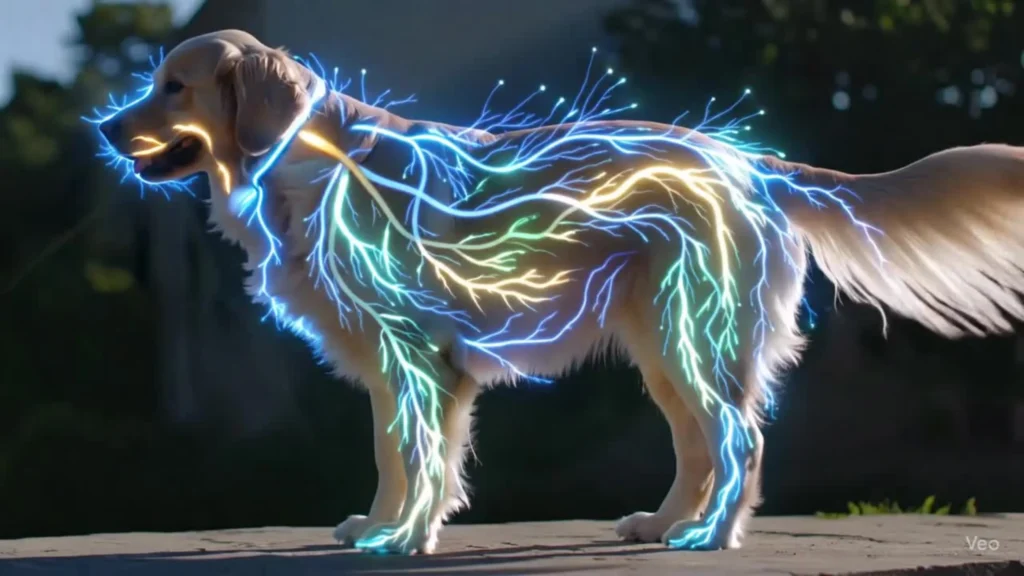Science Behind Pet Love, Unconditional Bond
Science Behind Pet Love, Unconditional Bond explains why your pet feels like family. It shows how oxytocin flows during a mutual gaze, how calming hormones work for both of you, and how brain circuits and attachment shape what often feels unconditional. This article breaks the research into plain language, gives real-world examples, and ends with practical tips to deepen your bond.
Key takeaway
- Your brain and your pet’s brain release the bonding chemical oxytocin when you touch or look at each other.
- Pets help lower your cortisol (stress) and increase calm.
- Caring for a pet delivers comfort; pets offer loyalty and predictable social reward.
- Regular play, routine, and gentle touch strengthen attachment.
- Small acts — eye contact, slow petting, a soft voice — deepen the bond.

Summary
What “Science Behind Pet Love, Unconditional Bond” means
When we say Science Behind Pet Love, Unconditional Bond, we mean the biological and behavioral reasons your dog greets you like family or your cat calms you on a bad day. The science looks at:
- Hormones that make both of you feel good.
- Brain circuits that reward social contact.
- Learned behavior and attachment patterns.
- Evolutionary history that shaped mutual benefits.
This article explains the research plainly, gives practical examples, and offers tips you can use right away. For more on how companion animals improve everyday life, see research into how dogs improve your life.
Reason 1 — Oxytocin release and mutual gaze
Have you ever locked eyes with your pet and felt time slow? That feeling is partly chemistry. One molecule keeps appearing in this story: oxytocin — the bonding hormone.
What research shows
- A 2009 study (Nagasawa et al.) found that dogs and owners who stared into each other’s eyes showed rises in oxytocin. Longer, gentler gazes produced bigger boosts.
- Oxytocin reduces stress and promotes trust, creating a positive loop: gaze → oxytocin → calm → repeated gaze.
- Similar responses appear in some cats and other companion animals, though the dynamics can differ.
Everyday use
- Think of mutual gaze as a social handshake: calm eye contact plus a soft face signals safety. For insight into why a dog may hold its stare, see why your dog stares — not just for food.
- Typical scene: you come home, kneel, meet eyes, greet calmly, pet — the loop strengthens trust.
Practical tips
- Make eye contact for a few seconds before play or correction.
- Use a soft, gentle voice; tone amplifies oxytocin-friendly cues.
- Pair gaze with slow petting (shoulder/chest for many dogs; chin and back for many cats).
- Respect your pet’s limits — if they avert their eyes, follow their lead.
Example
- A rescue dog that once bolted from strangers learned to seek calm interactions after months of quiet eye contact and gentle greetings. For adopters, resources like maximizing an adopted dog’s happiness can help make these early months more successful.
Reason 2 — Hormonal responses that calm both of you
Pets trigger more than one chemical — a bouquet of hormones and neurotransmitters produce mutual calm.
Key hormones
- Cortisol: interacting with pets often lowers this stress hormone.
- Dopamine: rewards pleasurable interactions, encouraging repetition.
- Serotonin: improves mood regulation.
- Endorphins: natural pain relief from touch.
Evidence
- Therapy dog visits often reduce patient cortisol, anxiety, and perceived pain.
- Petting a calm animal can lower blood pressure and heart rate.
- Long-term studies link pet ownership with improved mental health markers and sometimes better cardiovascular risk profiles — see connections in pieces such as talking to your dog improves mental health.
Why touch matters
- Stroking stimulates pressure receptors and calming neural circuits in both species.
- Trusted touch lowers pets’ cortisol too, reinforcing the unconditional bond.
Practical ways to use this
- Daily rituals: five minutes of calm petting after work lowers stress.
- Combine touch with slow breathing to amplify calming effects.
- For anxiety (storms/fireworks), use gentle petting in a quiet secure space.
- Keep sessions low-key for soothing; energetic play is for different goals.
Example
- A landing routine — sit, breathe, pet for five minutes — lowers both owner and dog heart rates and reactivity.
Reason 3 — Neurobiology of human-animal attachment
Bonding with a pet activates many of the same brain areas involved in human social bonds.
Key brain regions
- Ventral striatum / nucleus accumbens: reward center activated by pleasant pet interactions.
- Amygdala: processes emotion and safety; predictable pet interactions reduce its reactivity.
- Prefrontal cortex: helps regulate emotion and read social cues.
- Insula: linked to empathy and bodily awareness.
What studies show
- fMRI studies reveal increased reward-area activity when owners view their own pets — similar to parent–infant responses.
- Physiological synchrony (heart rate, brain rhythms) often aligns during calm interactions.
Mirror neurons and empathy
- Mirror neuron systems may help us catch our pets’ emotions — we mirror calm or nervous behavior, fostering empathy.
Practical takeaway
- Use positive reinforcement consistently to wire reward pathways (dopamine) that strengthen attachment.
- Predictable routines reduce anxiety and reinforce secure social patterns. Walks and new routes also provide mental stimulation and strengthen bonds — see how new walking paths can make a dog happier.
Example
- Training with calm praise and treats builds safety and rewires both owner’s and pet’s reward systems, improving behavior and attachment.
Reason 4 — Attachment theory and the unconditional bond
Attachment theory — used to describe caregiver–child bonds — applies to many pet relationships. Pets can function as attachment figures: sources of comfort and a secure base.
Attachment styles
- Secure: pet explores but returns for reassurance; handles stress better.
- Anxious: clingy or distressed on separation, often from inconsistent responses.
- Avoidant: appears aloof, possibly due to past neglect or individual temperament.
How pets act as attachment figures
- Pets seek humans during stress, showing the secure-base effect.
- Predictability (feeding, care, consistent responses) builds trust.
- Pets feel unconditional to many owners — not absolute, but steady acceptance that feels nonjudgmental.
Using attachment theory for behavior
- For separation anxiety: increase predictable routines and practice short, rewarded returns. Practical guidance is available in resources like managing a dog when home alone.
- For fearful pets: build small, consistent successes to reshape expectations.
Practical strategies
- Be predictable with schedules and cues.
- Respond calmly to fear; don’t unintentionally reinforce anxiety.
- Use gradual exposure for separation issues and reward calm behavior.
- Avoid punishment-based methods that erode trust.
Caveat
- Unconditional can mislead — pets still have needs and boundaries; consistent, respectful care matters.
Reason 5 — Evolutionary roots and real-life benefits
Why did humans and certain animals bond? Mutual benefit shaped domestication: animals that tolerated humans gained food and shelter; humans gained helpers and companionship.
Evolutionary sketch
- Dogs likely self-domesticated: less fearful wolves that tolerated humans accessed resources and propagated social traits.
- Humans benefitted from hunting help, guarding, and companionship; cats reduced pests in grain stores.
Modern implications
- Traits like social responsiveness and reduced fearfulness made animals better companions.
- Human caregiving circuits reward attachment with pets much like family bonds.
Real-life benefits
- Mental health: pets reduce loneliness and often buffer depressive symptoms.
- Physical health: dog owners tend to be more active; some studies link pet ownership to lower blood pressure and improved cardiovascular markers — general benefits are discussed in articles like how dogs improve your life.
- Social facilitation: pets are social ice-breakers, helping community ties.
- Child development: pets can teach empathy and responsibility and may influence immune development.
Limits
- Pets are not a substitute for clinical therapy when needed. Ownership has costs and responsibilities.
Practical wins
- Daily dog walks provide exercise and routine.
- Pets add structure (feeding, play) that can help mood and daily functioning.
- Emotional support: pets offer nonjudgmental companionship.
Example
- A retired neighbor’s daily dog walk provides routine and activity, benefiting both owner and dog.
For people bringing home a rescue, check adoption advice such as secrets for a smooth transition in adoption and how to adopt a dog — a complete guide.
The Science Behind Pet Love, Unconditional Bond — what researchers say
Researchers studying the Science Behind Pet Love, Unconditional Bond consistently point to the interplay of oxytocin, stress reduction, reward circuits, and learned attachment. Key journals and institutes (Social Neuroscience, HABRI, and veterinary behavior research) show converging evidence that predictable, positive interactions produce measurable physiological and psychological gains for both people and pets.
Reflection, practical tips, and where to learn more
You’ve read about hormones, brain circuits, attachment, and evolution — the core of Science Behind Pet Love, Unconditional Bond. Here are clear, science-backed tips to deepen your connection.
Practical tips
- Prioritize calm connection: 5–10 minutes daily of eye contact, gentle petting, and soft talk boosts oxytocin and reduces cortisol.
- Build predictable routines: consistent feeding, pre-departure cues, and training responses strengthen attachment.
- Use positive reinforcement: treats, praise, and play engage dopamine and encourage good behavior.
- Practice short separations: avoid separation anxiety by building up time apart gradually and rewarding calm returns.
- Exercise together: walks and play address evolutionary needs and improve physical health.
- Learn signals: ears, eyes, and posture show mood — reading them builds empathy and faster responses. For cat owners, useful decoding of feline vocal cues appears in cats’ secret sounds.
- Desensitize gently: for pets that dislike handling, use slow, positive exposure.
- Seek professional help: consult qualified behaviorists for persistent fear or aggression (look for DACVB, CPDT-KA credentials).
Quick checklist
- 5 minutes calm interaction daily
- One 5–10 minute training session daily
- One walk or vigorous play three times a week
- Weekly grooming/handling practice
- Short leave and return practice every other day
Resources
- Human-Animal Bond Research Institute (HABRI): https://habri.org
- American Veterinary Society of Animal Behavior (AVSAB): https://avsab.org
- Nagasawa et al. (2009) — Oxytocin–gaze positive loop (Science)
- Books: How Dogs Love Us (Gregory Berns); Inside of a Dog (Alexandra Horowitz)
- Additional practical reads on sleep and nighttime behavior: pet sleeping positions and understanding your dog’s sleep behavior.

Conclusion
The Science Behind Pet Love, Unconditional Bond is both biology and behavior. A few seconds of calm eye contact can spike oxytocin; short daily rituals lower cortisol and build trust. Repeated kindness rewires reward and attachment circuits in both brains. Tend this bond with predictable routines, gentle touch, and positive reinforcement — small, steady actions yield deep, enduring rewards.
For more science-backed guidance and practical ideas, explore https://techhavela.com.
Frequently asked questions
Q: What is the Science Behind Pet Love, Unconditional Bond between you and your pet?
A: Hormones like oxytocin spike with touch and gaze, creating warmth, safety, and closeness.
Q: How does oxytocin help bond you with your pet?
A: It reduces stress, increases trust, and reinforces calm, positive interactions.
Q: Can pets read your mood?
A: Yes — they watch your face, hear tone of voice, and smell hormonal signals; they react quickly.
Q: Is pet love really unconditional?
A: Mostly yes from a human perspective: pets offer steady acceptance, though they still respond to care, boundaries, and past experience.
Q: How does touch change the bond?
A: Petting releases feel-good chemicals that slow heart rate and ease worry in both species.
Q: Do pets help your health?
A: Yes — pets often reduce stress, lower blood pressure, encourage activity, and improve mood for many owners. For related mental-health benefits, see talking to your dog improves mental health and lifestyle effects discussed in how dogs improve your life.
Q: How can you strengthen the bond?
A: Spend calm time together, use positive training, keep routines, exercise together, read signals, and be consistent. If nighttime behavior is an issue, resources such as is your dog waking at night? and why is my dog crying without pain? can help troubleshoot.
Image:
**Sidnir Vieira**
Founder of TechHavela
A passionate pet and tech content creator, helping dog owners across the U.S. make smarter decisions for their furry friends.




